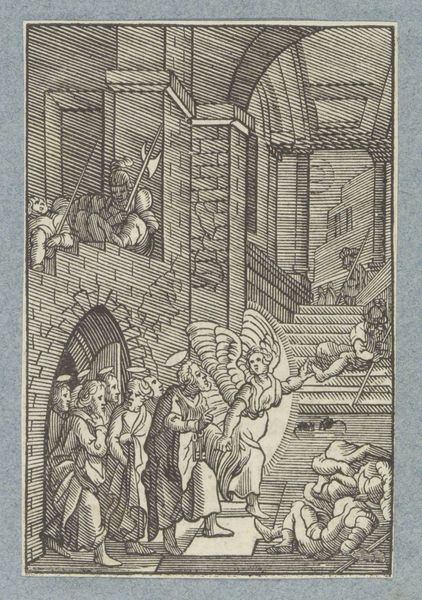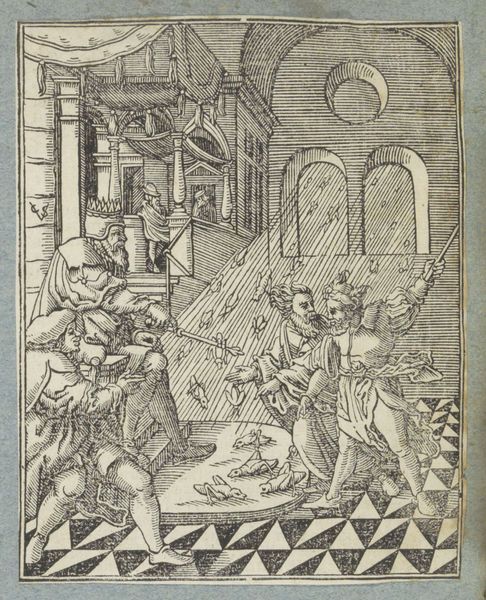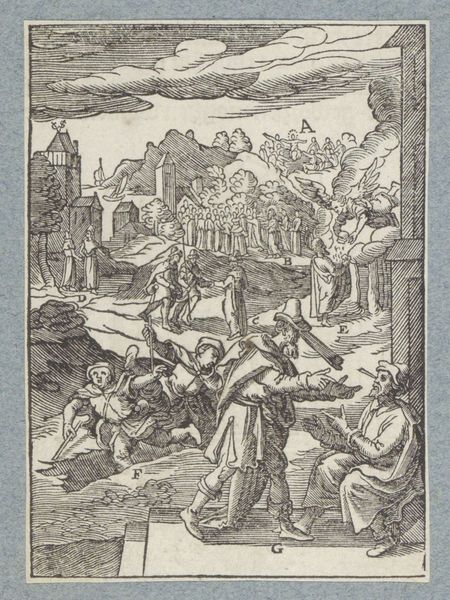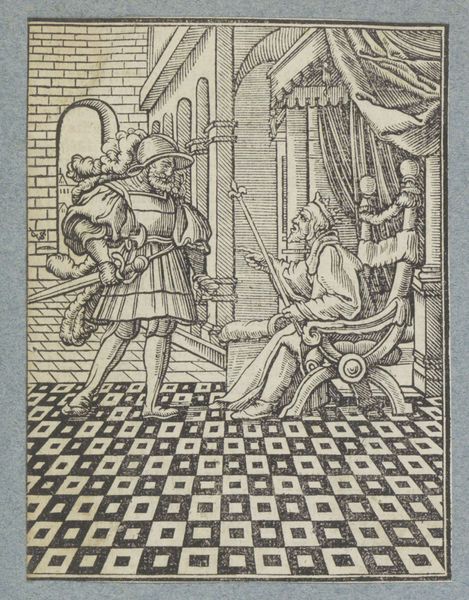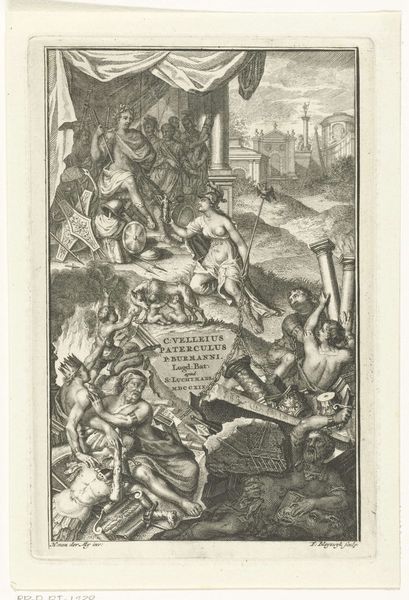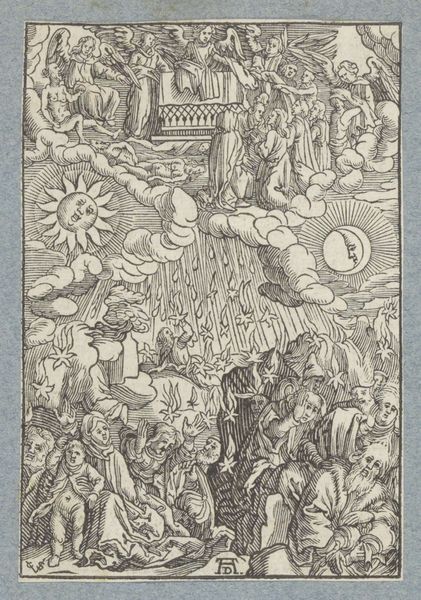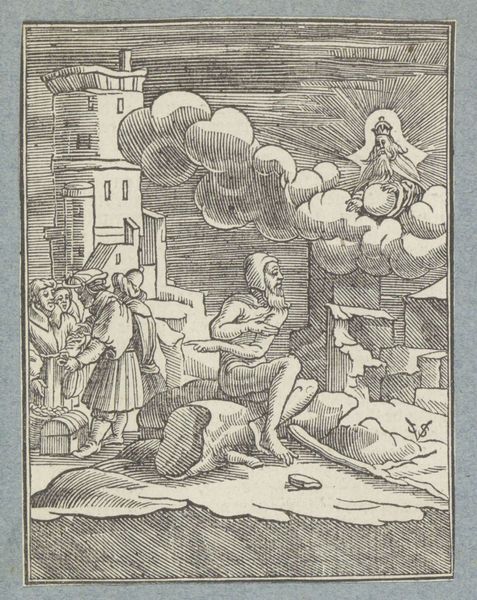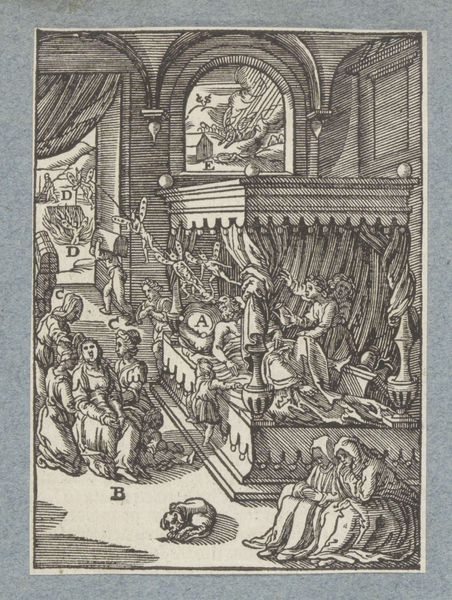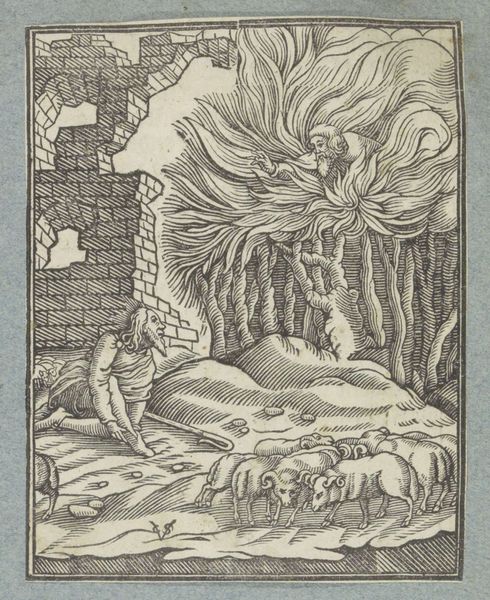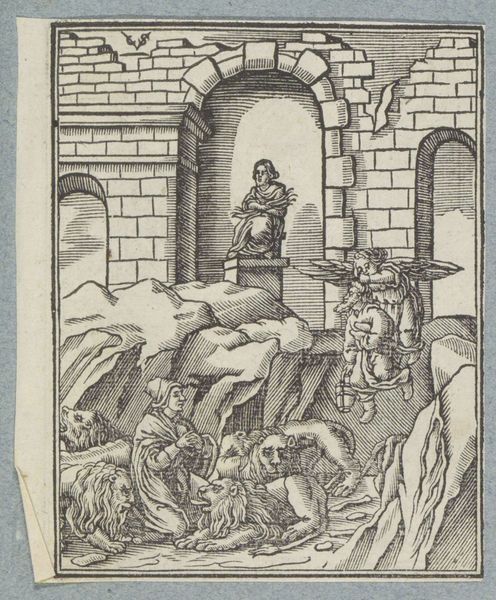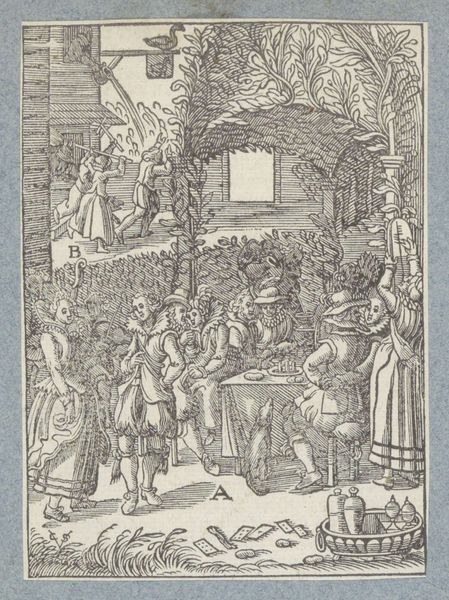
engraving
#
narrative-art
#
baroque
#
pen drawing
#
pen illustration
#
pen sketch
#
pen-ink sketch
#
pen work
#
sketchbook drawing
#
history-painting
#
engraving
Dimensions: height 111 mm, width 88 mm
Copyright: Rijks Museum: Open Domain
Curator: The atmosphere is immediately striking – a tense stillness punctuated by chaos and divine retribution. Editor: This engraving, entitled “The Tenth Plague of Egypt”, was created by Christoffel van Sichem II, around 1645-1646. It’s currently held at the Rijksmuseum. It depicts the final plague visited upon Egypt, as told in the Book of Exodus. Curator: And we see its depiction manifested as graphic and quite violent! Look at the contrast between the stark, almost geometric architecture and the bodies strewn about the foreground. Editor: Indeed. Sichem masterfully utilizes the contrast between light and shadow to convey the drama of the scene. Note the checkerboard floor; it adds a sense of depth and perspective, drawing the eye towards the background where we see a cityscape under a stormy sky. That dark, foreboding sky hangs over the rigid, geometric buildings and is juxtaposed against a cherubic, yet undeniably vengeful, angel soaring above, sword in hand. Curator: Considering the historical context, it is difficult to miss the connection of power and its abuse to themes of divine justice and retribution. Sichem’s work can be viewed as part of a larger discourse around tyranny and liberation. Remember the context for Dutch artists, who were dealing with political independence and grappling with moral authority. How interesting that we find that expressed here, via a story of Jewish liberation. Editor: Agreed, the angular lines contribute to the work's expressive quality. Notice how each line serves a purpose, defining shapes, creating texture, and delineating the play of light and shadow. Each element amplifies the overall emotional effect on the viewer. Curator: In many ways it reminds us that narratives, especially biblical ones, are repeatedly re-interpreted to reflect contemporary struggles. What do these images say about freedom? What do they suggest about oppression? Those questions, I believe, resonate deeply within both historical and present-day dialogues around social justice. Editor: Right, the narrative and dramatic deployment of contrasting elements elevates it beyond a simple religious illustration. It transforms this engraving into a powerful testament of how lines and shading serve dramatic effect, ultimately creating a viewing experience that stays with you long after you've moved on.
Comments
No comments
Be the first to comment and join the conversation on the ultimate creative platform.
